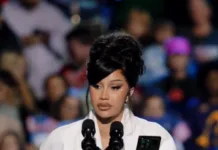List of All Monarchies Around the World 2023
The death of Queen Elizabeth II in September 2022 gave the world a rare glimpse of the United Kingdom’s deep monarchical traditions.
After the high-profile funerals attended by world leaders, King Charles III ascended to the throne securing the continuity of the UK royalty.
UK is one of several countries that still embrace monarchies. These are the monarchies around the world in 2023;
1. Japan
-
- The Japanese people are under the leadership of the oldest hereditary monarchy on earth, with over 126 different rulers.
- Japan currently recognizes the monarchy as a symbol of the state and the unity of the people.
- The royal family in Japan goes by the title of House of Yamato or the Imperial Family of Japan.
- Naruhito is the current emperor of Japan and the latest of the long chain of male successors to ascend to the throne.
- The emperor of Japan is not only the face of the powerful Yamato Dynasty but also the leader of Japan’s indigenous religion Shinto.
- Naruhito ascended to power in 2019 after his father Emperor Emeritus Akihito stepped down.
- The emperor of Japan enjoys extensive privileges including immunity from court prosecution.

Also read: No turning back! Prince Harry speaks on leaving the Monarchy
2. Denmark
-
- Denmark’s monarchy is a historic and constitutional office in the Kingdom of Denmark.
- The Kingdom of Denmark as it is today was founded and unified by the Vikings Kings.
- Until the 17th century, the monarchy was elective.
- King Frederick III, however, made it hereditary from then on.
- The Danish Realm underwent further changes in 1849 when a new constitution was installed.
- This made the monarchy a constitutional office sharing power with an elected government, changing it from an absolute monarchy.
- Margrethe II is the current Queen of Denmark who has reigned as Denmark’s monarch for over 50 years.
3. United Kingdom
-
- The United Kingdom is the most influential monarchy in the world.
- Its enormous influence comes from its colonial exploits where it administered vast swathes of territories.
- King Charles III is the King of the United Kingdom and head of state of independent countries like Australia and Canada.
- The UK monarchy has influence in the following commonwealth realms;
-
- Antigua and Barbuda
- Australia
- The Bahamas
- Belize
- Canada
- Jamaica
- New Zealand
- Papua New Guinea
- Saint Kitts and Nevis
- Saint Lucia
- Saint Vincent and the Grenadines
- Solomon Islands
- Tuvalu
-
- The commonwealth is a body that includes 56 countries around the world, 52 of which were part of the British Empire.
- “The sun never sets on the British Empire” explains how powerful the British monarchy is.
4. Saudi Arabia
-
- Saudi Arabia, officially the Kingdom of Saudi Arabia, is the second largest country in the Arab World after Algeria.
- The King of Saudi Arabia is the monarchial head of state and ruler of Saudi Arabia who has absolute power.
- He is the head of the Saudi Arabian royal family known as the House of Saud.
- King Salman bin Abdulaziz Al Saud is the reigning Saudi King having ascended to the throne in 2015.
- King Salman bin Abdulaziz Al Saud is also the Custodian of the Two Holy Mosques.
- These mosques are Masjid al Haram in Mecca and Al-Masjid an-Nabawi in Medina.
- The two mosques have a high religious significance and see thousands of Muslim pilgrims from all over the world.

5.Vatican City
-
- Vatican City is governed as an absolute monarchy with the pope at its head.
- The pope served as the head of state or sovereign of the Papal States and later the Vatican City State since the eighth century.
- Also known as the supreme pontiff, Roman pontiff, or sovereign pontiff, the pope is the bishop of Rome and head of the worldwide Catholic Church.
- Vatican City is a landlocked sovereign city-state located within the city of Rome in Italy.
- It is also the world’s smallest independent ‘country’ with an area of 0.44 km² (0.17 sq mi).
- The pope is usually elected by the College of Cardinals during a papal conclave.
- He exercises absolute power and is elected for life.
6. Eswatini
-
- Eswatini is a Kingdom in the south of Africa.
- Formerly known as Swaziland, the Kingdom is under a hereditary monarchy.
- The landlocked country is partially surrounded by the larger South Africa and borders Mozambique to its northeast.
- King Mswati III absolutely rules Eswatini since he was coronated in 1986.
- Mswati III was 18 years and the youngest monarch in the world at the time.
- Mswati III is famous for his polygamy practice and currently has 15 wives.

7. United Arab Emirates (UAE)
-
- The United Arab Emirates (UAE) is a federation of seven constituent monarchies:
- These constituent monarchies are the Emirates of;
-
- Abu Dhabi
- Ajman
- Dubai
- Fujairah
- Ras al-Khaimah
- Sharjah
- Umm al-Quwain
-
- According to convention, the ruler of Abu Dhabi is the President and head of state of the United Arab Emirates.
- The ruler of Dubai is the Prime Minister of the United Arab Emirates and the head of the government.
Also read: Top 10 Books About African Leaders
8. Malaysia
-
- Malaysia’s monarchy assumes the same arrangement as the United Arab Emirates.
- The monarchies of Malaysia are part of the constitutional monarchy system practiced in Malaysia.
- Each of the nine monarchs serves as the head of state of his own state, as well as the head of the religion of Islam in his state.
- As with other constitutional monarchs around the world, the rulers do not participate in the actual governance of their states.
- They serve as constitutional heads of their states, with the state executive powers exercised by state governments elected by the people.
9. Jordan
-
- Jordan is a monarchy under the Hashemite dynasty.
- While other monarchs perform ceremonial roles and do not directly run their states, the Jordanian king is more powerful.
- The King of Jordan is the head of state and commander in chief of the armed forces.
- The king appoints top state officials including the prime minister, security chiefs, as well as Senate members.
- The Jordanian monarchy was set up in 1921 by King Abdullah I who was Emir until 1946.
- Emir is an Arabic term used to refer to a male monarch.
10. Morocco
-
- The Kingdom of Morocco is under the Alawi dynasty which has existed for nearly 400 years.
- The reigning King Mohammed VI is a wealthy monarch with vast business holdings across several economic sectors in Morocco.
- King Mohammed VI created a constitutional monarchy in 2011 following widespread protests and calls for democracy in the Arab World.
- While Morocco is governed by a democratically elected government, the King has the power to choose the Prime Minister who becomes head of government.






















